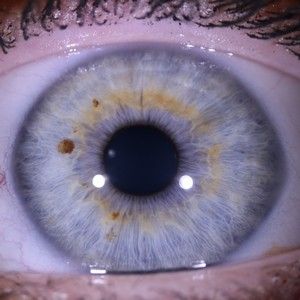Heartburn: Two Common Iridology Stomach Markers
Heartburn? Seeing two or three of these markers should underscore the importance of being diligent with long term health-promoting habits.
by Judith Cobb, MH, CI3, NCP, NNCP, CCII3
DISCLAIMER
This article is not meant to diagnose nor prescribe. It is meant for educational purposes only. Judith Cobb, Cobblestone Health, and Nature's Sunshine Products accept no responsibility for results you get, whether good or bad, from using this information. Always seek the guidance of a qualified health professional.
Stomach problems are very commonplace. Just about everyone has had challenges with heartburn, indigestion, or nausea at one time or another. Longstanding issues can be rooted in lifestyle, food choices, and/or genetics.
There are several iris indicators that reveal genetic predispositions to stomach insufficiencies. We are going to look at just a few of them in this article.
We must remember three things as we look for stomach markings in the irides.
1) The types of markings we are going to look at in this article do not appear or disappear. Changing the diet or lifestyle is not going to change the markers even if symptoms are eradicated.
2) Seeing any of these markers in an iris is not a guarantee of stomach problems. They are only a predisposition. If the person is young or is doing the right things for his stomach, he may avoid developing symptoms. If he doesn’t have any symptoms yet, making sure health-promoting habits are in place may prevent the development of problems.
3) Everyone who has symptoms will not necessarily have iris markings. All health problems do not have a genetic base. As such, making consistently poor health choices can undermine even the strongest of constitutions.
The goal of iridology is not to change the irides; the goal is to improve the health.
Gray Border

If you are using a high-resolution camera you may see a border that appears gray at the inner edge of the iris. As with other tissue in the iris, gray means ‘less reactive’. Specifically, a gray border suggests the stomach lining is genetically not strong. This will often exhibit in the body as reduced stomach acid levels as the stomach tries to protect its weakened lining from being eroded by digestive acid. It also suggests a reduced ability to absorb nutrients in the gastrointestinal tract due to poor digestion in the stomach. Symptoms often include poor wound healing, low energy, and excess gastrointestinal gas.
Comb Teeth
If the iris fibers next to the edge of the pupil are somewhat more loosely packed, they may make the edge appear serrated, like it’s been snipped with pinking shears. In fact, these are minor radial furrows. This type of border, known as comb teeth, also suggests an increased chance of having a deficient stomach lining with the attendant reduced digestive acid levels. Symptoms of poor digestion, including excess stomach gas (burping, belching, and bloating) and flatulence are common when this indicator is present.
Seeing just one of these markers should inspire us to implement corrective food and lifestyle measures, even if no symptoms are present. Seeing two or three of these should underscore the importance of being diligent with long term health-promoting habits.

Watch this video to see the three most common iris markings:

And here is the webinar:

Copyright © 2018 by Judith Cobb, Cobblestone Health Ltd. All rights reserved. Please respect the time it takes to write and publish articles. If you will link to this article and give proper attribution, you are encouraged to quote sections (though not the entire article).

